The world of Skripte in Adobe InDesign opens up new possibilities for designing and managing documents. With Skripten, you can automate time-consuming tasks and significantly optimize your workflows. In this guide, you will learn how to effectively use InDesign scripts to improve your work processes.
Key Insights
- Skripte in InDesign allow for task automation.
- You can find and execute scripts through the Scripts panel in InDesign.
- It's important to know what a script does before applying it.
- You have the ability to add and use your own scripts.
- There are numerous useful scripts that can assist you in your work.
Step-by-Step Guide
1. Accessing the Scripts Panel
To start with scripts, first open the Scripts panel in InDesign. You can find it under "Window" > "Utilities" > "Scripts". This will give you access to a variety of scripts that are already integrated into InDesign.
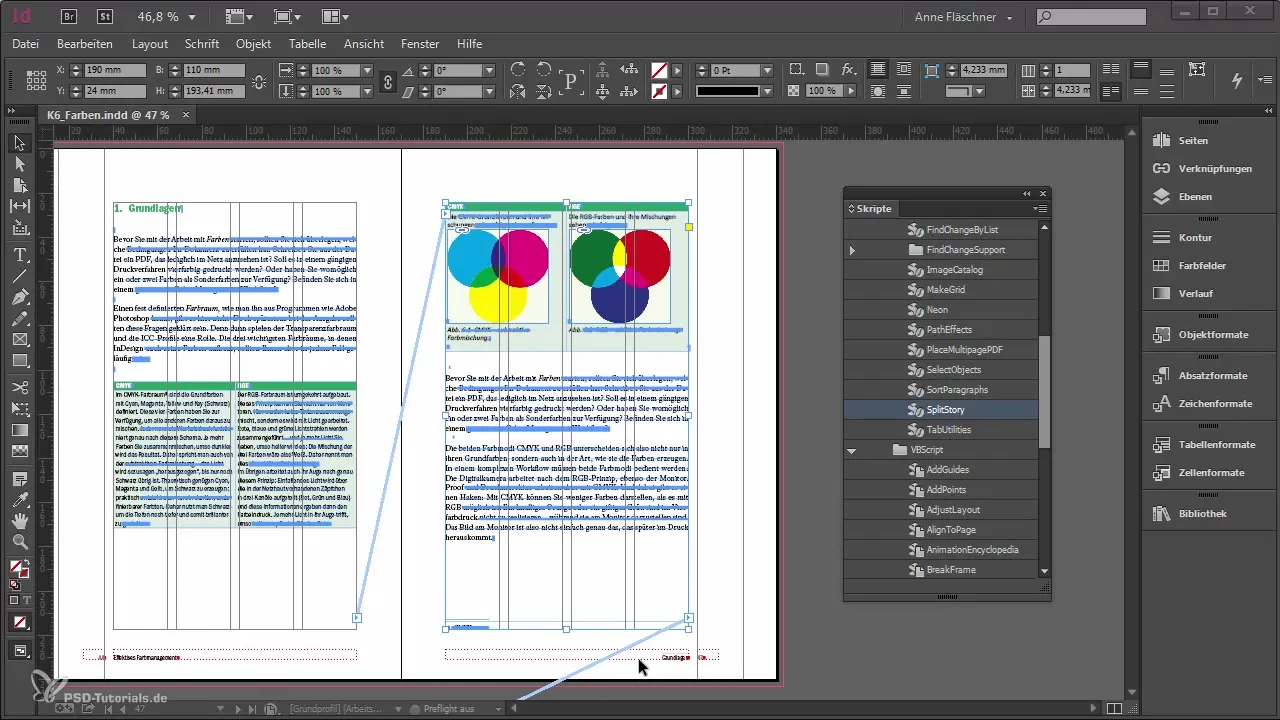
2. Understanding Scripts
A script is essentially a small program that enables you to automate workflows. You can group multiple actions together and define what should be executed in what order. This will help you save time on repetitive tasks.
3. Example Scripts
In InDesign, several useful scripts are already integrated. For example, there is a script that automatically renames all paragraph styles or separates text frames. If you have several linked text frames, a script like "Split Story" can divide them into individual frames.
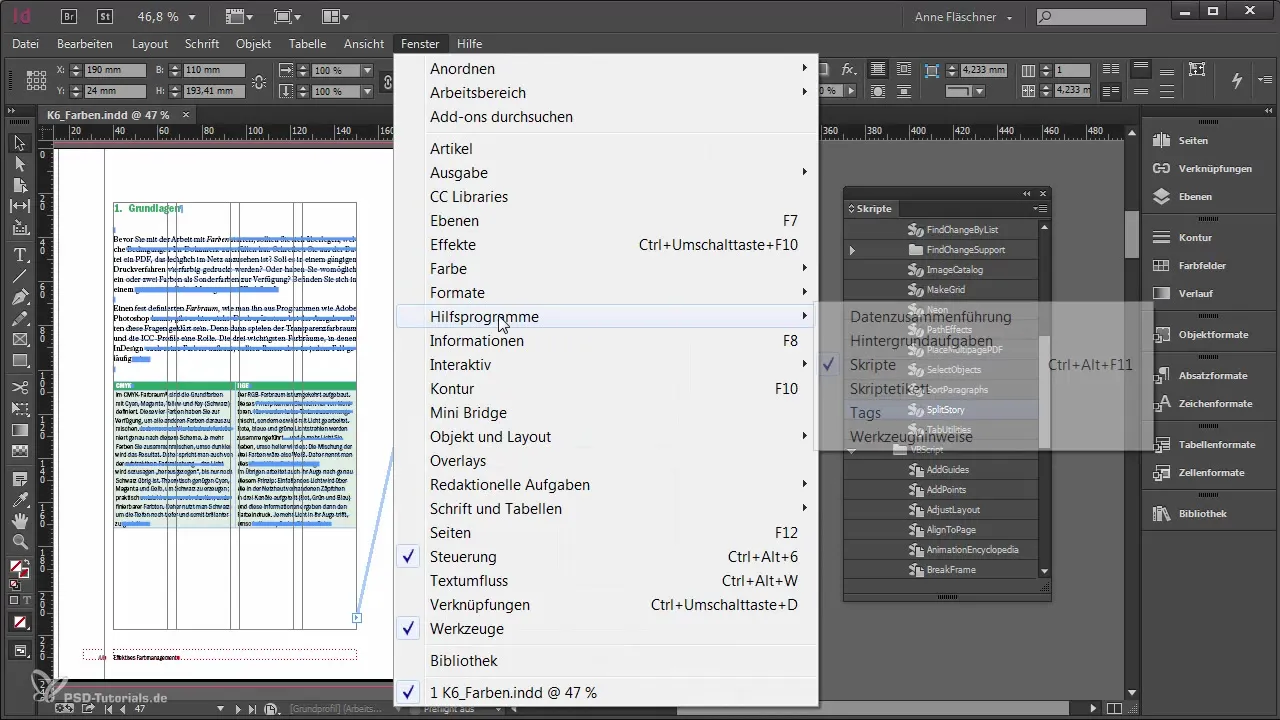
4. Executing Scripts
To execute a script, simply double-click on it. Make sure you know what the script will do, as some scripts can make extensive changes. These may not be easily reversible, so be cautious with your changes.
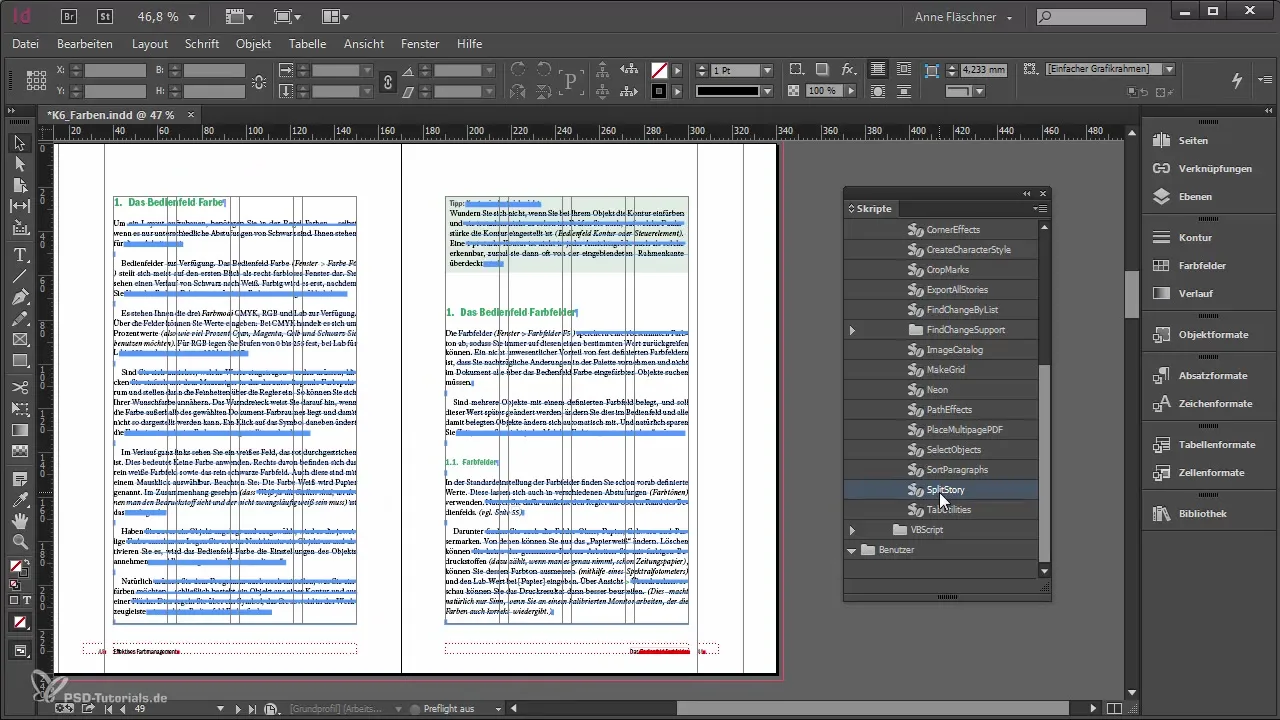
5. Save Before Applying
A key tip is to always save before running a script. Since scripts perform many steps simultaneously, undoing changes can be time-consuming or even impossible.
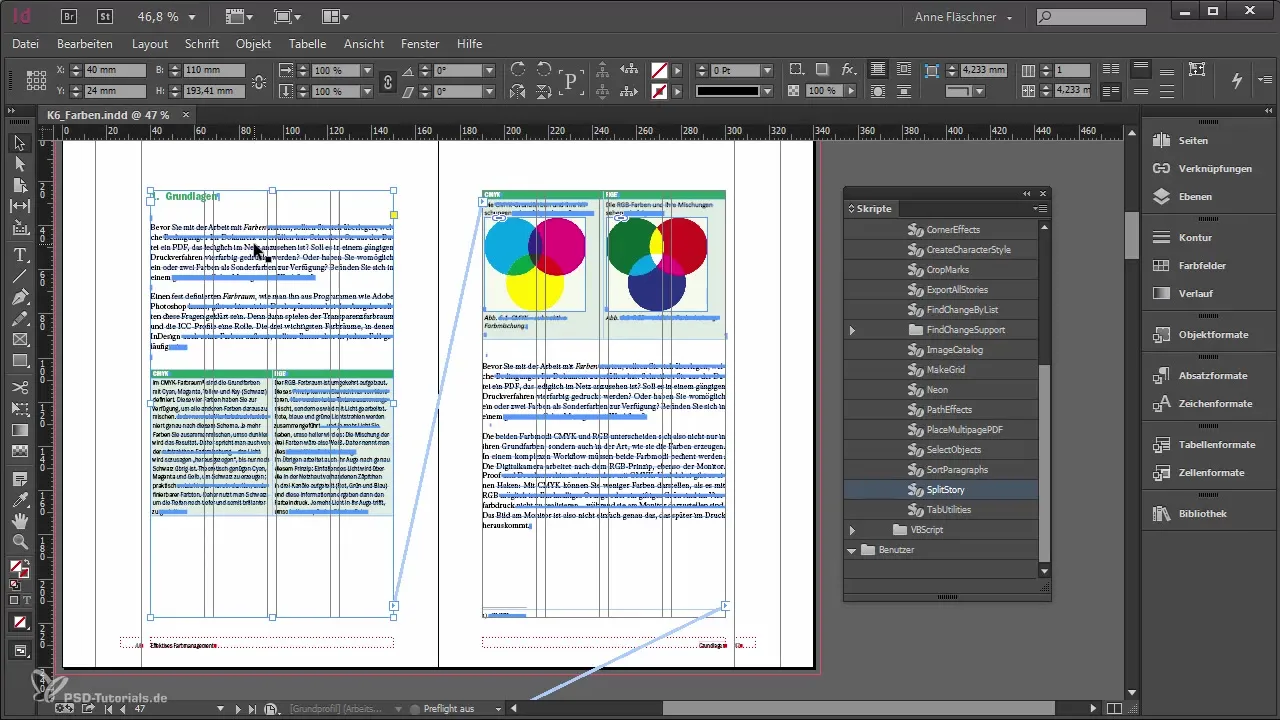
6. Adding Scripts
If you have a script you want to use, you can place it in the user folder of the scripts. You can find this in the scripts folder of InDesign. Just right-click and open the desired scripts folder in Explorer, and then insert your scripts there.
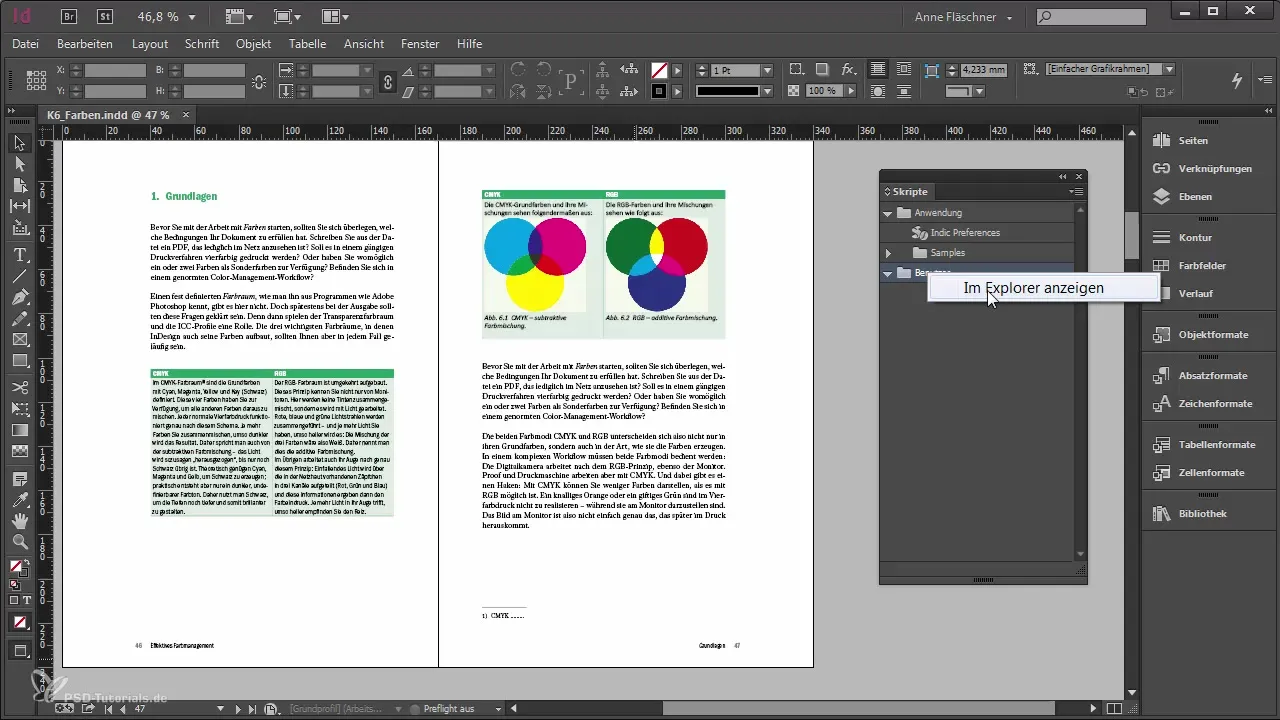
7. Discovering Useful Scripts
There are many useful scripts that you can find on the internet or in forums like PSD Tutorials. An example is the script "Apply Table Styles," which helps you format tables in your document efficiently.
8. Handling Overrides
Another handy script is "Clear Overrides," which helps you delete all formatting overrides in a document. This is especially useful when you are importing data from other sources like Word and want to ensure that only defined formats are used.
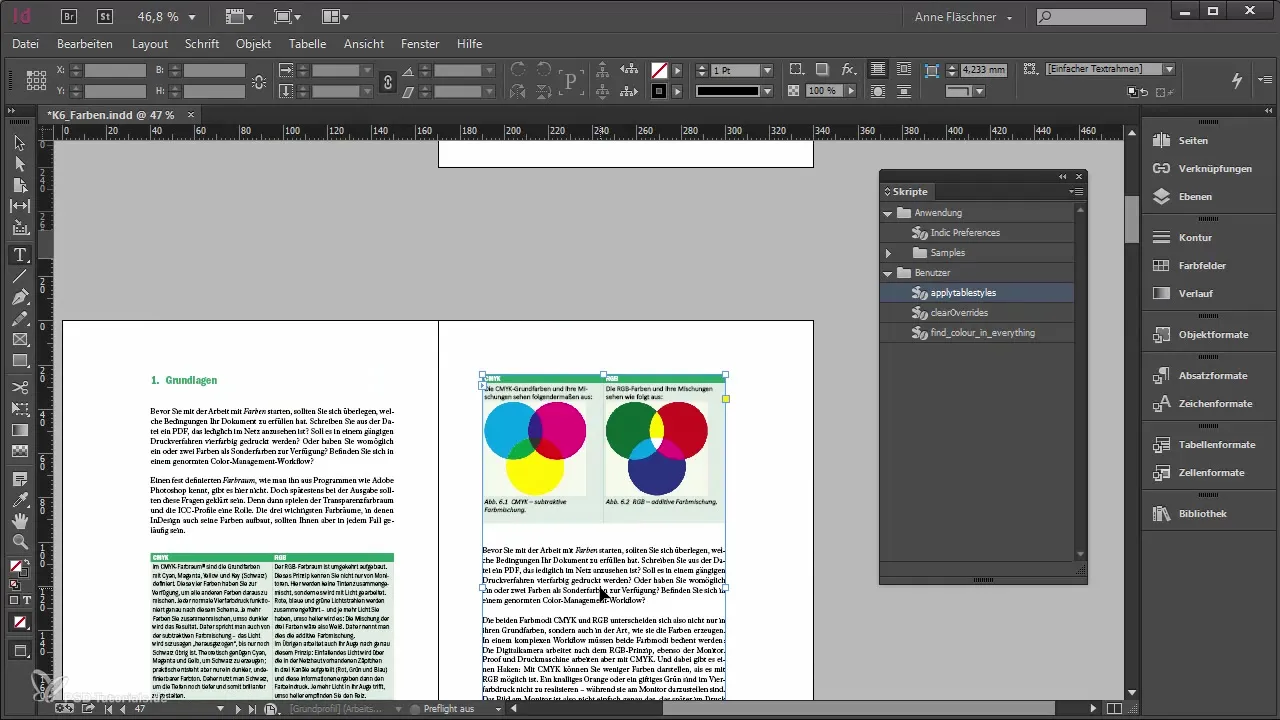
9. Identifying Colors
The script "Find Color in Everything" is ideal for finding out which colors are used in your document. This is helpful when you want to remove unwanted color fields, as you can quickly see where these colors are used.
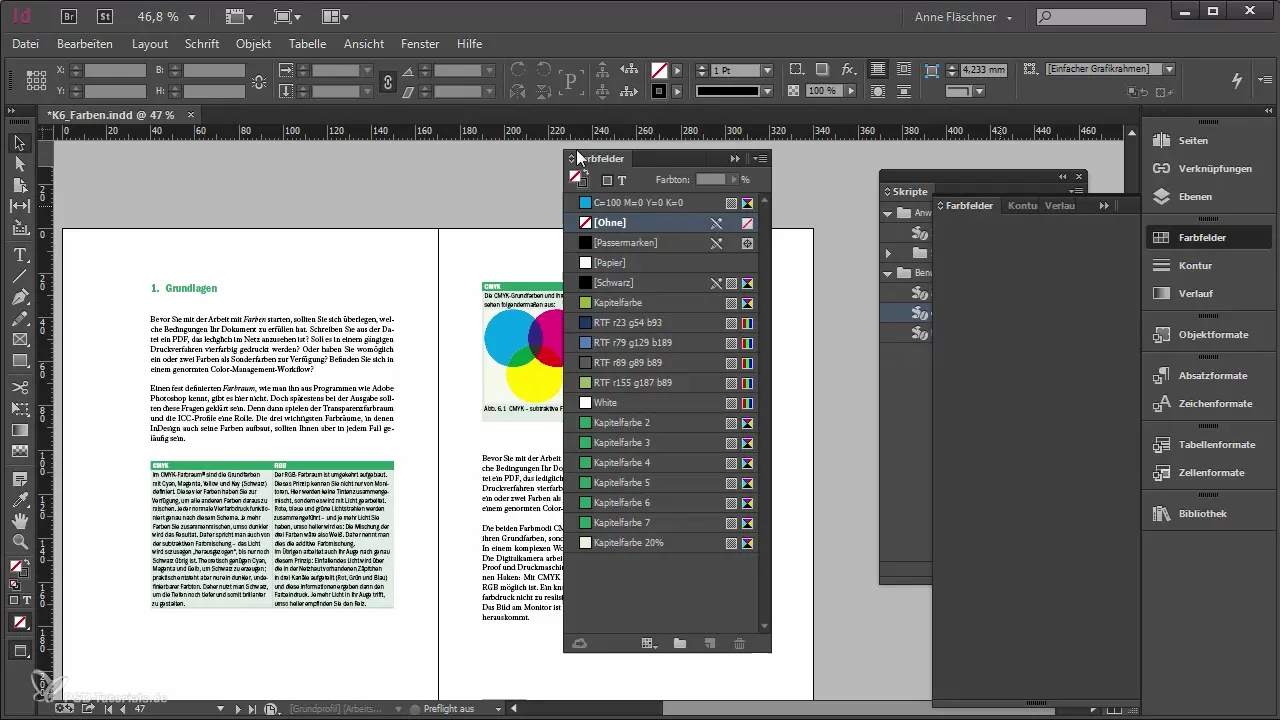
10. Experimenting with Scripts
Now that you know some basic scripts, feel free to experiment further. Try out different scripts and find out which ones can further improve your workflow. There are countless scripts tailored to different needs.
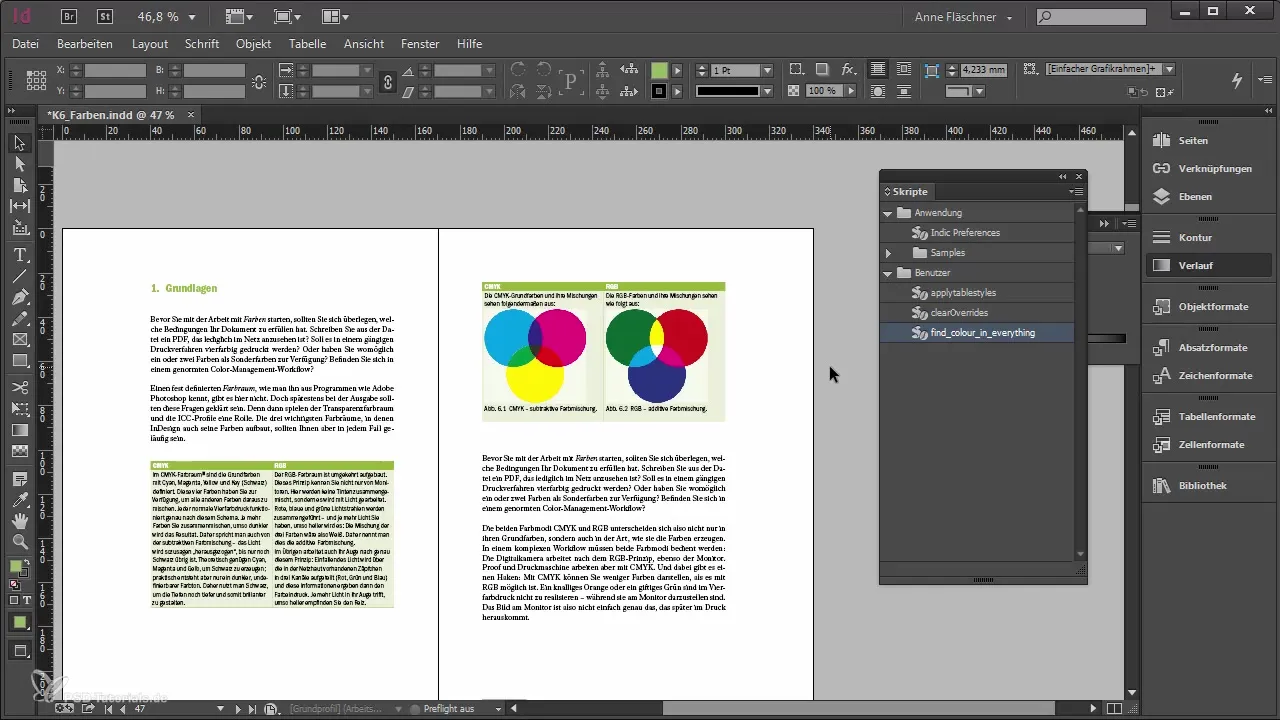
Summary - Scripting in Adobe InDesign - A Practical Guide
In this guide, you have learned the fundamentals of scripting in Adobe InDesign. You now know how to open the Scripts panel, execute scripts, and even add your own scripts. Use this knowledge to make your workflow more efficient and save time.
Frequently Asked Questions
What are scripts in InDesign?Scripts are small programs that help you automate repetitive tasks in InDesign.
How do I execute a script?Simply double-click the desired script in the Scripts panel.
What happens if a script performs many actions simultaneously?Undoing might take a long time or not work. Therefore, it's advisable to save first.
Where can I find useful scripts?You can find scripts in forums, on websites, or even from other InDesign users.
How do I add my own scripts?Just place them in the user folder of the scripts folder in InDesign.


